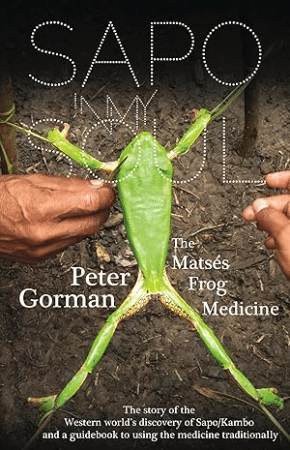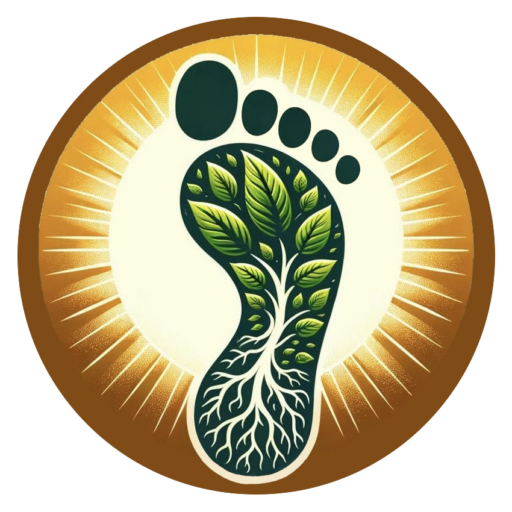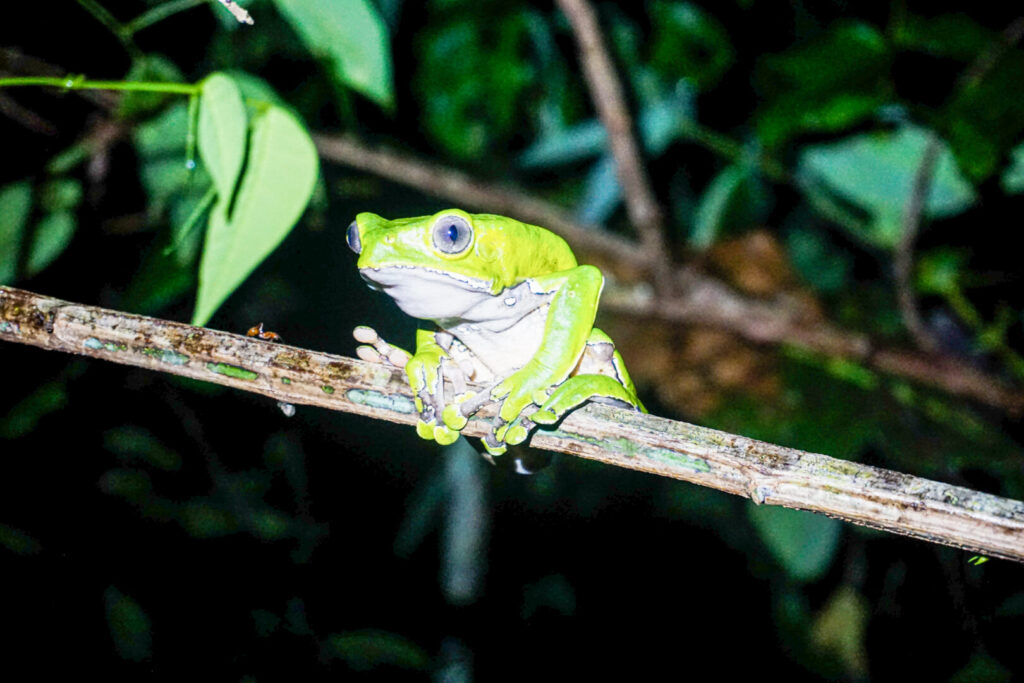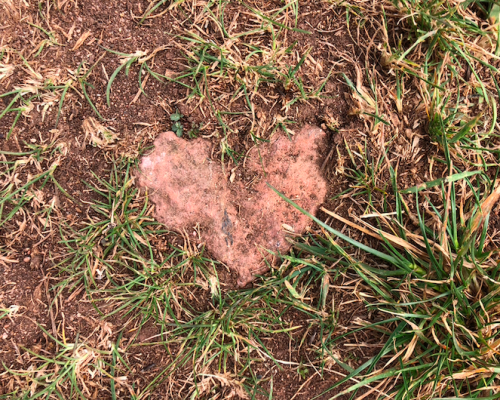Please note: this video is currently in French, but you can activate YouTube’s auto-generated subtitles in English while we work on providing a dedicated English version.
General Information on Cleanses
There is a belief that unites all hygienists and naturopaths, which links diseases to the toxemia of the human body. According to this principle, if we improve the quality of the terrain in a person, that is to say, if we reduce the toxemia, then diseases will naturally cease their progression and symptoms will diminish or even disappear.
This is relatively mechanical and simple to understand, but it opposes the Pasteurian view of medicine, which considers that there are good and bad microbes responsible for our health troubles. It also opposes the allopathic view of medicine, which sees diseases as failures, dysfunctions of the human body. Where the hygienist view sees diseases, according to their nature, as crises of toxin elimination or as a wonderful adaptation of the human body to continue functioning with a certain toxic load so that it causes the least damage possible to the organism.
From this point of view, all the symptoms we complain about would be orchestrated knowingly by the great intelligence of the body, which can be seen at work, for example, when a sperm meets an egg to give life to a new being.
If we look at health from this angle, it appears crucial to reduce toxemia. However, the most powerful tool to expel toxins, even before fasting since fasting is necessary when one consumes them, is cleanses. Under these conditions, one might believe that catharotherapy (therapy through cleanses) is unanimously accepted in the microcosm of natural medicine, but this is not the case; it is rather a subject of division.
In my opinion, opinions are divided on the subject for several reasons:
- It is necessary to have sufficient vitality and to have the excretory organs sufficiently open to use them; otherwise, their use can be exhausting, sometimes even contraindicated.
- It is most often necessary to use them frequently and regularly over several years for them to profoundly change the terrain.
- It only makes sense to use them if one is motivated to change their eating habits deeply and sustainably towards a diet that is primarily plant-based and raw. Otherwise, cleansing only serves to expel the poisons ingested daily, which does not allow for a profound change in the terrain. It is therefore important to be in a dynamic where significantly more toxins are expelled than toxins that enter the body.
- They do not solve all health problems because our stock of toxins is too great to be completely emptied. Cleanses can therefore only serve to evacuate the excess in circulation (via the lymph).
- Emotional troubles and stress can also lead to the production or accumulation of toxins, and thus cause diseases.
- Our state of health also depends on our state of being, our emotional balance, the joy we have in living, and the love we spread around us.

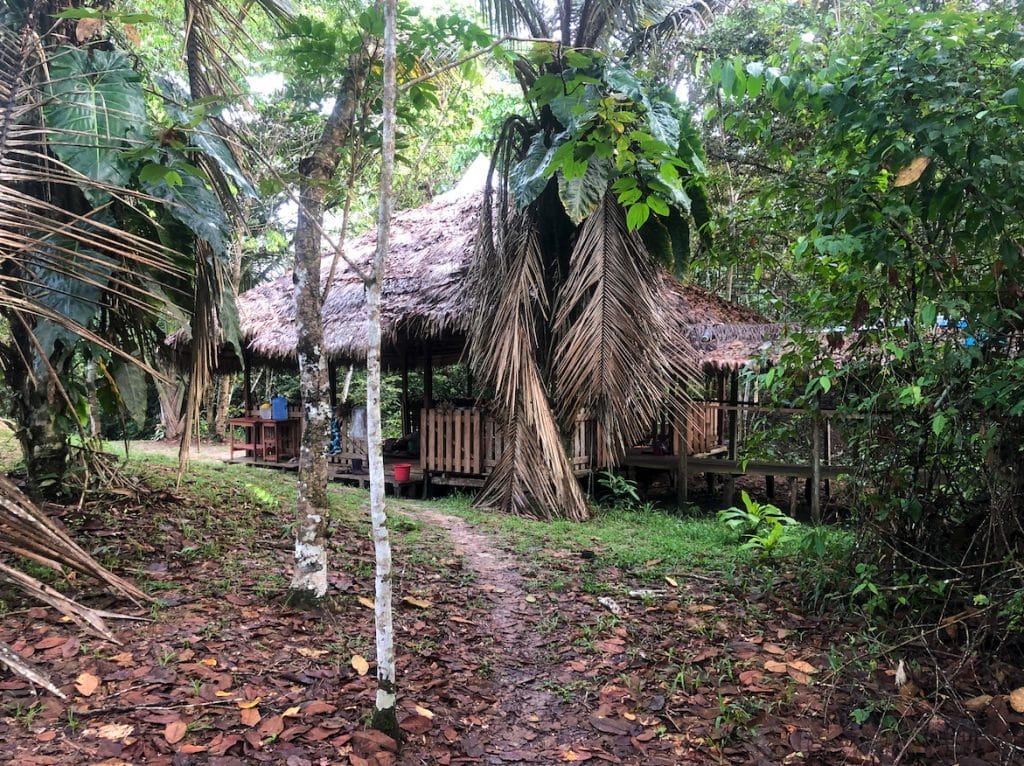
Even considering these differing opinions and taking into account the importance of the emotional aspect in humans, it is important to observe the following facts to form one’s own opinion on the matter:
- Some mammals (canids, felines, bears, primates, etc.) also purge even though their food and existence are 100% physiological.
- Cleanses were and are sometimes still used by traditional Chinese, Ayurvedic, and Hippocratic medicines, to name a few.
- Elsewhere on the planet, other peoples, through centuries-old shamanic traditions, also use catharotherapy, as we will see in this article.
Presumed Virtues of Cleanses
My personal experience has led me to see cleanses as very powerful tools to improve my physical and mental health and to free myself from my addictions to cooked, industrial, and animal-derived foods. A testimony that I detail in this article on cleanses. Even though I am in favor of this form of therapy, I am not unaware of its limits, a subject I address in this other article on the limits of hygienism. In my opinion, to use them wisely, it is necessary to wait for a period of several months to several years during which one will gradually improve their lifestyle until reaching a plateau that cannot be surpassed. It is at this precise moment that they will provide their greatest benefits.
Even though this tool is not a panacea, I believe it is the most effective for expelling toxins while simultaneously doing a powerful emotional cleansing. Schematic observations clearly show that some buried anger comes out with acids, and the same goes for fears that come out with glues. It is as if the energetic memories of certain traumatic events in our lives (or even transgenerational) are stored in the acid crystals and glues, and these memories are released when they exit the body.
Moreover, a cleanse should never be taken without first setting an intention (see this article on “How to Set Intentions?”) to direct its benefits according to our physical or emotional needs at the moment, while keeping in mind the solemn nature of this practice.
Furthermore, cleanses boost the immune system and open the excretory organs, which contributes to the body’s autonomy so that, in the long run, it is as capable as possible of doing its own cleanings.
My Experience in Peru
Motivated to deepen my experiments in catharotherapy, I went to Peru in May 2021 to train as a practitioner (at Kambo Naturista) of one of the most powerful cleanses: Kambo. A three-week journey along the Amazon during which I followed an 8-day diet accompanied by multiple cleanses. This puts into perspective the “violent” nature often attributed to castor oil, which, by comparison, seems mild… As my trainer at Kambo Naturista, Deyan, said: “With Kambo, it either goes badly, or it goes very badly!” I confirm!…
Here is what I retained:
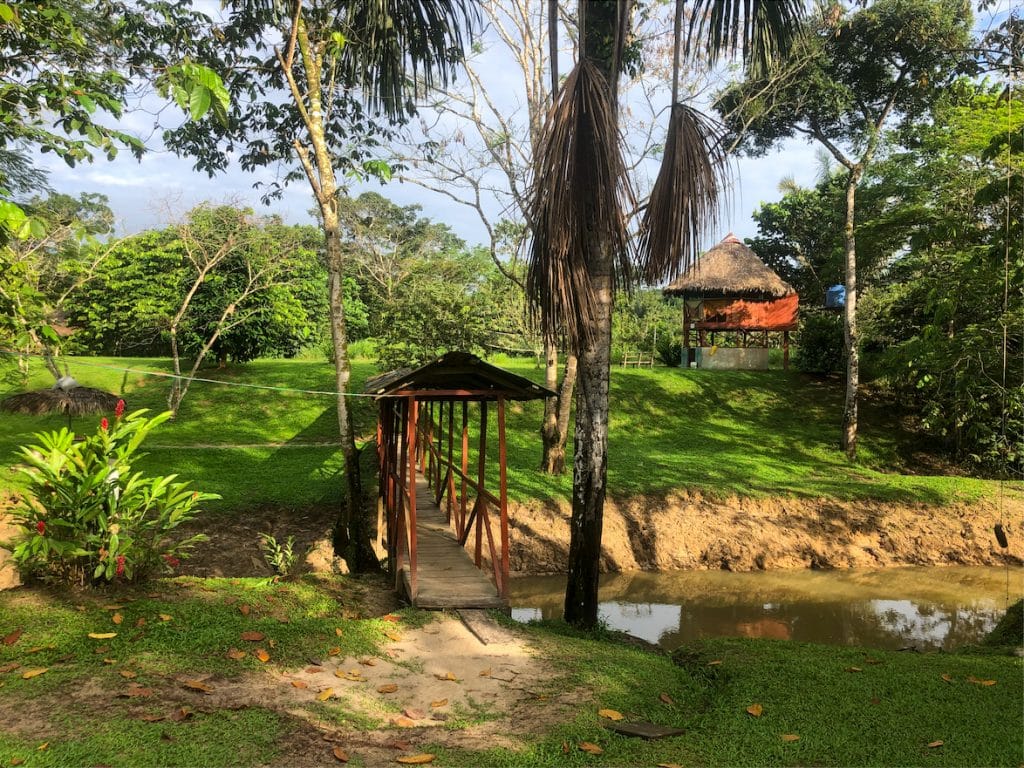
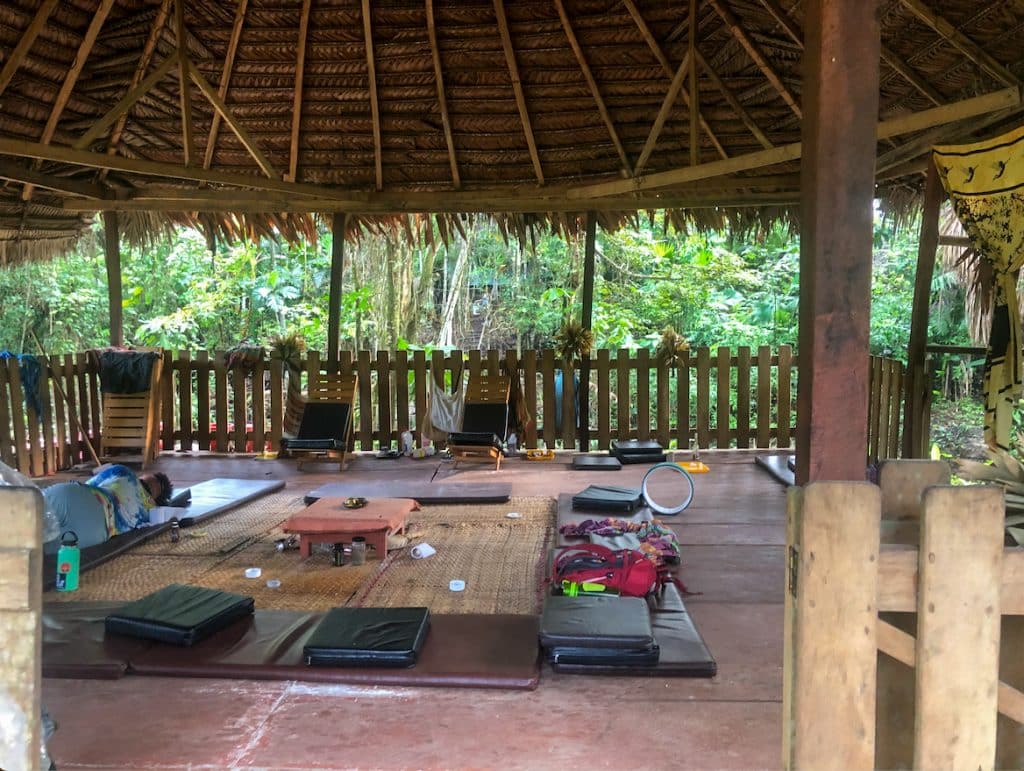
The Kambo Cleanse
Kambo is a natural substance extracted from the skin secretion of an Amazonian frog called Bi-Phylomedusa Bicolore, also known as the “giant forest monkey frog.” It is called this due to its size and its inclination to climb trees. Thanks to the high toxicity of the poison it exudes through its skin when stressed, it does not have to worry about predators or infections (we will see why later in the section “What Science Says”).
It should be noted that this frog produces poison and not venom. Venom requires a wound (via a sting or fangs) to make one sick, whereas poison does not; it is active through simple contact or ingestion.
It is, of course, not recommended to ingest this substance. However, by applying just a few drops of this poison to the skin after scraping a part of the epidermis, it causes a very deep purgative effect that lasts about 30 minutes and induces sweating, vomiting, tears, and potentially diarrhea. This cleanse primarily targets the liver and leaves a great sensation of lightness, joy, and clarity.
The idea of using a poison or venom for healing is not new (see this article; this link leads to a website in French. To read it in English or another language, simply copy the URL and paste it into Google Translate) because substances that are classified as toxic or poisonous simply indicate that they contain highly active molecules even in very small quantities. Whether from a bee, a snake, a frog, or even a mollusk, poisons and venoms have interesting health benefits if used correctly. This illustrates well, as Paracelsus (the father of toxicology) said, that it is always the dose that makes the poison. Even water, if you drink several liters in a quarter of an hour, can cause death (by hyponatremia).
The Traditional Use of Kambo
Only a few tribes in Peru and Brazil have used this “medicine” traditionally for several centuries. These peoples used (before adopting Western customs) Kambo for two main reasons:
- To make hunters stronger. To prepare physically and mentally, they would purge with Kambo the day before a hunting expedition.
- In case of illness, they would resort to Kambo (regardless of age and gender) to cleanse the body of its physical and energetic toxins. Several sessions could take place until health chased away the illness just as light chases away darkness.
Even though there are variations in protocols according to traditions, Kambo was generally used to gain more energy, be healthier, and combat depression and infertility issues.
The Legend of Kambo
But how does one come to conceive the idea of using the secretions produced by a giant forest frog to apply it to previously scraped skin?!
According to the Kaxinawá Indians, a large part of the tribe fell gravely ill one day. Their shaman, Kampu, did everything in his power to try to heal them. He tried all these medicinal herbs, consulted his ancestors, and performed rituals, but nothing could heal the tribe members.
Kampu ventured into the jungle under the influence of psychoactive plants and invoked the Great Spirit. He was shown how to suspend the giant frog and how to collect the toxic white liquid from its skin. The Great Spirit then showed him how to apply the poison to skin burns. After this revelation, Kampu rushed back to his tribe to treat the sick members as the Great Spirit had taught him. The Kambo ritual managed to heal his brothers and sisters.
According to the Indians, the spirit of Kampu was passed on to the giant frog after his disappearance, where it still lives to serve the Amazonian Indians with its healing gifts. Different tribes have different names for Kampu, such as Sapo, Kambu, or Vacina da Floresta. The rituals performed during the ceremonies vary for each tribe, although in most cases, the upper layer of the skin is burned and removed, and Kambo is applied to this wound.
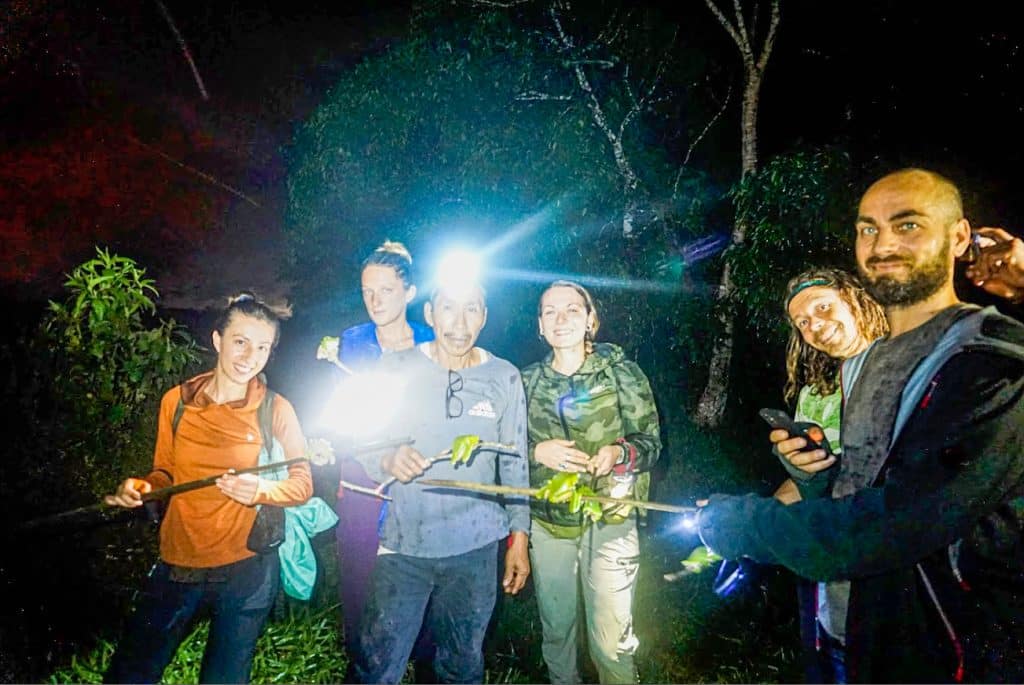
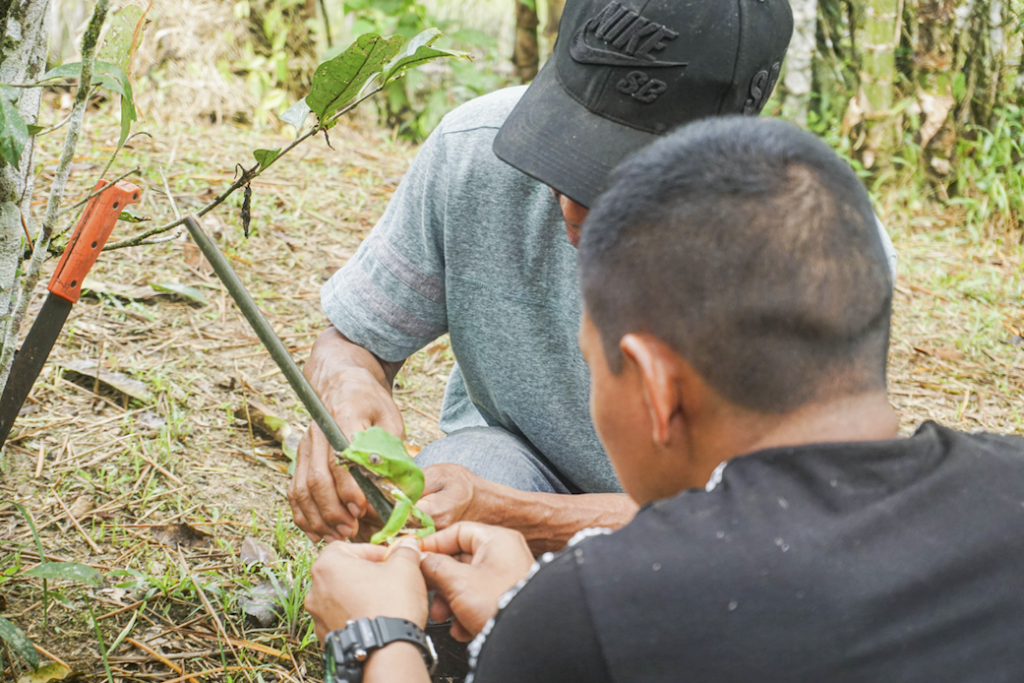
The Kambo Ritual
Beforehand, it is advisable to fast for at least 6 hours and not to have consumed drugs, medications, or stimulants the day before and on the same day.
A few seconds after applying Kambo, the body turns red and a strong sensation of heat is felt due to vasodilation. Blood rushes to the head, the face may swell, and sometimes swallowing becomes difficult. Heart rate and body temperature increase. Participants then begin to sweat and may also experience chills.
Next comes a second phase characterized by general paleness, coldness of the skin, significant sweating, decreased heart rate, and marked weakness. Most often, a strong nausea occurs in this phase, prompting the participant to vomit until their stomach is empty. Diarrhea or liquid evacuations are possible, especially in cases where there has been no vomiting. Whether for vomiting or diarrhea, these occur due to the contracting effect on the smooth muscle tissues that envelop the various organs of the human body and exude the liquids contained within, including bile from the gallbladder.
Then comes the third and final phase, which manifests when the aforementioned symptoms begin to gradually disappear. Drowsiness and fatigue may occur, and generally, the participant is invited to rest for a period of 30 to 60 minutes.
During the Kambo session, most shamans sing or play an instrument. Some rituals of spiritual purification may also be involved; each shaman has their own rituals.
The first experience of Kambo can be very frightening. Learning about this practice is one thing, but experiencing it is truly intense. That said, it all depends on our relationship with vomiting. Personally, I had a very negative memory of it: that of my childhood following a particularly painful ear infection and, later, a period in my life when I drank a lot of alcohol… For these reasons, my body resisted the purgative action of Kambo, and it was very painful to endure. It took me about ten sessions to completely reconcile with vomiting and for it to become as natural as going to the bathroom!
If the effects are not very appealing so far, one nonetheless feels completely revitalized and wonderfully well in mind and body after a Kambo session. This very pleasant sensation generally lasts several hours. The next day, one feels more vibrant and thoughts are clearer than ever. Some physical discomforts will be reduced or even completely dissipated. Shamans believe that repeating the Kambo ritual for several consecutive days can even heal significant ailments.
How to Harvest Kambo?
Before deciding to go to Peru to discover this ancestral medicine and train as a practitioner, it was essential to me that the frog not be harmed when collecting its secretions. During my trip there, I had the opportunity to catch these famous giant frogs with the Matsés (the name of the indigenous tribe I was with). Here’s how it’s done:
These frogs are generally found near the water bodies of the Amazon where they sing at night. The Indians imitate the frog’s call (a deep and dry “Kwah”) to locate it, as it reveals itself by responding innocently to this call (if done correctly…). Catching them is quite easy since these giant frogs have no natural predators and, as a result, they move very slowly. Once a location where they are found is identified, it is enough to climb the trees to catch them where they have perched.
They are then gently tied and stretched by their four legs using ropes and stakes planted in the ground, so that their body takes the shape of an X. The poisonous substance from their skin is then harvested by friction on the skin and placed on small wooden strips where the substance is left to dry near a fire. When the Matsés have collected enough secretions while being careful not to harm it, they release the frog, which returns unharmed to nature.


Benefits and contraindications of Kambo
Experience shows that Kambo provides the following benefits:
- reduction of chronic pain
- improvement of mood
- strengthening of the immune system
- improvement of digestion
- decrease in states of stress and anxiety
- increase in body energy and physical endurance
- inner well-being
- improved cognitive abilities
- more mental clarity
Moreover, it is recognized as a powerful antidepressant and helps to break free from certain addictions and phobias. (see this article ; this link leads to a website in French. To read it in English or another language, simply copy the URL and paste it into Google Translate)
On the other hand, it is contraindicated in the following cases:
- cardiovascular diseases, hypertension and hypotension
- history of aneurysm
- history of cerebral hemorrhage
- thrombosis
- Addison’s disease
- kidney stones
- epilepsy
- serious liver problems (hepatitis, alcoholism), large gallstones
- varicose veins, abscess or tumor in the esophagus, gastroesophageal reflux
- pancreatitis
- immunosuppressive treatment or chemotherapy
- daily medication intake
- severe mental illnesses
- pregnant women
- allergy to one of the substances contained in Kambo
From my point of view, the most important benefit that Kambo offers is boosting the immune system and, at the same time, providing the body with a complete cleanse: biliary and lymphatic drainage; evacuation of acids and glues. For these reasons, it is the most versatile purge I know. Not to mention its more subtle effects, mental, emotional, memory-related, and energetic, which are harder to measure but are nonetheless felt.
The power of this emotional, memory-related, energetic cleansing and the deep sense of relief felt after the purge is probably linked to the act of vomiting. As if it contained a strong symbolic charge, that of bringing out buried things, those things within us that disgust us and need to be vomited, as popular language puts it. Through vomiting, the body can release its emotional and muscular armors, and then promote a deep release of tensions.
By releasing certain resistances & blockages, whose origin dates back to stresses or traumas that have crystallized in the body in the form of diseases, Kambo acts on both the root causes and the repercussions. Through its action on the physical body, psyche, and emotional body, Kambo offers a holistic solution to somatizations.
Like any powerful tool, Kambo is a “medicine” that should not be taken lightly and must be supervised by a professional. There are risks that can lead to death, which is why it is important to integrate this practice within a holistic view of health while respecting safety guidelines.


What science says
Science has been interested in Kambo since the 1930s when the intrepid American anthropologist Peter Gorman publicized the Kambo rituals he observed and experienced in South America. Since the 1980s, Kambo has been known as an alternative therapy for depression, anxiety, chronic pain & infections, autoimmune disorders, Lyme disease, addictions, and other physical and mental health issues.
Initially viewed as a folk medicine by the Western world, science is now closely examining it. The University of Paris and Belfast have conducted studies on this subject, and Kambo has even made its way into the most prestigious laboratories in the USA with a view to creating new treatments, particularly against cancer. To date, more than 70 patents on isolated and synthesized components from Kambo have been filed worldwide.
Since then, it has been known that Kambo is composed of many different substances, each having its own effect on the human body. It contains a high level of peptides from the bradykinin family, phyllokinin, tachykinins, phyllomedusine, caerulein, sauvagine, tryptophyllines, dermorphins, deltorphins, and bombesins (see this article) that act synergistically on the heart, spleen, blood and blood vessels, on the digestive, hepatic, and pancreatic systems, on salivary and lacrimal secretions, on the central nervous system, and on the immune and lymphatic systems. Quite a frog! It is probably no coincidence that amphibians are emblematic animals in myths, tales, and legends.
What particularly interests the medical research community is that some of these peptides are among the most powerful anti-inflammatory, antibacterial, and anti-tumor agents known to date. Some Kambo peptides also act as muscle relaxants and can thus be used for cardiovascular diseases.
Medical science, a pale copy of nature
According to the Kambo France community, most research has only been done in vitro on certain components of Kambo, on bacteria and cancer cells. To date, there has been no research on a placebo test group regarding the healing properties of Kambo.
The pharmaceutical industry has already appropriated ancestral knowledge, particularly that of the peoples living in the jungle, to design medications (see this article; this link leads to a website in French. To read it in English or another language, simply copy the URL and paste it into Google Translate) from the active molecules found in plants whose benefits have long been known to indigenous people. However, regarding this, it is important to know two things:
1) The law prohibits patenting living beings in their original form (see this article; this link leads to a website in French. To read it in English or another language, simply copy the URL and paste it into Google Translate). Therefore, pharmaceutical laboratories create isomers of the active molecules discovered in plants (or venoms or poisons) that are deemed interesting. Thus, it is isomers that are found in medications and not the original molecule that is absorbed by taking the plant (the venom or poison) in its natural form.
2) The therapeutic effects of plants (of a venom or poison) cannot be explained by the action of a single isolated active molecule but often by the synergy of several hundred molecules that, when combined, act with great intelligence in the body, which limits the side effects inherent to medications.
For all these reasons, the benefits derived from the traditional use of Kambo will never be sold in the form of medications. What could emerge in pill form will always be a pale copy of the effects that can be obtained with the poison taken according to the rules of the art.
The link between shamanism and hygiene
Faced with the deadlock of science in its quest for more active molecules to combat civilization diseases and antibiotic-resistant bacteria, the hygienist approach proves to be very interesting to explain the benefits of Kambo without falling into the pitfalls of Pasteurian thinking (see this video on Béchamp’s work; please note: this video is currently in French, but you can activate YouTube’s auto-generated subtitles in English while we work on providing a dedicated English version) or tribal mysticism.
From my hygienist point of view, Kambo is just one purge among others to cleanse the terrain, even if, thanks to its famous peptides that interest laboratories, it proves particularly effective in stimulating the immune system and expelling many toxins, with a marked specific action to cleanse the mental, emotional, and energetic sphere.

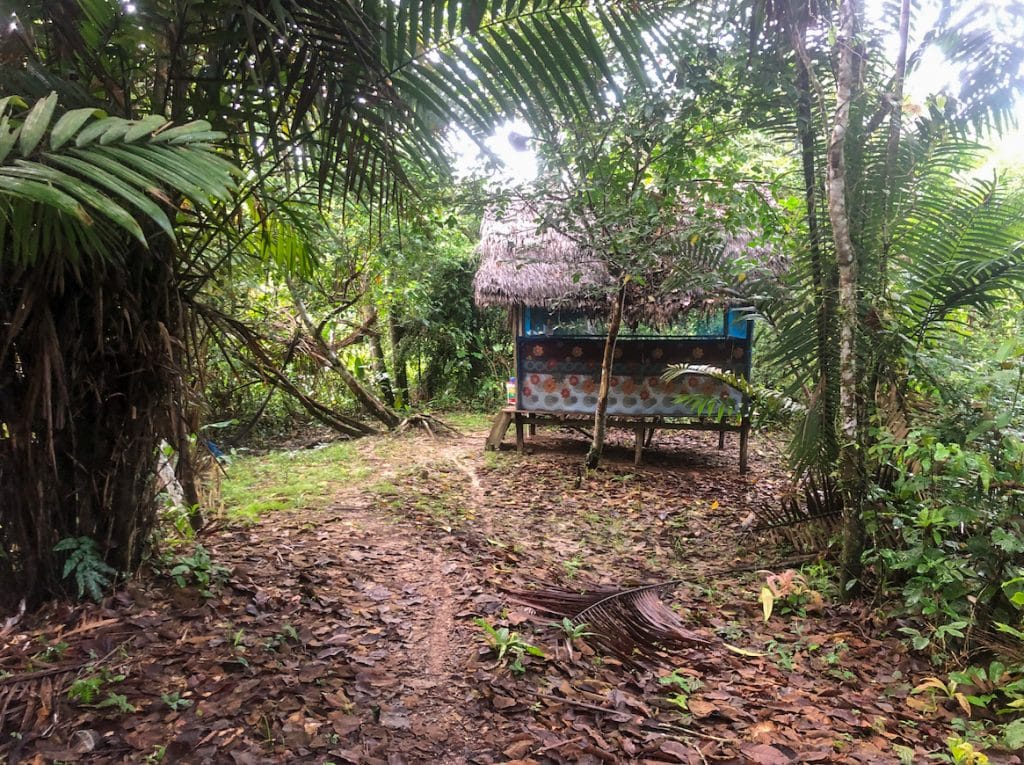
Recently, in September 2023, I had the opportunity to test another shamanic purge: the Tobacco purge.
The Tobacco purge
It has several similarities with Kambo, namely that it is a purging vomit that clarifies & cleanses the mental, emotional, memory, and energetic fields. Its purgative action is powerful and energizing, and it is recognized for its virtues of bringing discernment & courage. It also helps to overcome depressions and addictions (including to cigarettes!) of all kinds. Some therapists even use it as a complement to psychotherapies and other analyses (see this article; this link leads to a website in French. To read it in English or another language, simply copy the URL and paste it into Google Translate). Personally, I believe it is also very effective for opening the heart and providing a different perspective on conflicting situations. It is no coincidence that this plant was smoked in the peace pipe!
The tobacco purge ritual takes place over a full day of fasting with dietary restrictions and sexual abstinence several days before and after the purge. Its execution is much simpler than that of Kambo since it only requires drinking tobacco juice obtained from Mapacho leaves (the name given to Sacred Tobacco, Nicotiana Rustica) that are infused. Then, it is necessary to drink several liters of water to provoke liberating vomit.
Although tobacco is a chemically very complex plant, to my knowledge, there are no scientific studies addressing the physiological benefits of this shamanic medicine. It is probably too impacted by the negative image it conveys in our societies, largely because additives have been added to tobacco to make smokers addicted (see this article; this link leads to a website in French. To read it in English or another language, simply copy the URL and paste it into Google Translate). However, what I have observed is that the tobacco purge causes a cleansing of the liver (via the draining of bile at the moment of vomiting) and, potentially, diarrhea. In my case, I was pleasantly surprised to observe a significant elimination of mucus orally, which suggests that Ricin is not the only one with this ability! Ricin and tobacco are both considered master plants, meaning they teach and do not just purge. This leads me to think that we would benefit from drawing inspiration from the shamanic framework, imbued with reverence for the Spirits, before using Ricin. Indeed, the latter is too often used carelessly as a vulgar and unpleasant substance without any consideration for it. Under these conditions, it is hardly surprising that incidents occur.
Following this first tobacco purge, I experienced great physical and psychological well-being for three weeks, which prompted me to eat only raw and dissociated foods (as in sensory eating, the subject of my next article) and to set aside raw cuisine and fats in the form of oil and dry oilseeds. What I consider to be the ideal diet! To be continued….
To learn more about Kambo
Book
« Sapo in my soul » de Peter Gorman
Websites
https://medicinefrogkambo.com
https://kambonaturista.com/
Articles
https://www.sciencedirect.com/science/article/abs/pii/0196978185903432
https://www.iceers.org/kambo-a-traditional-remedy-2/
https://pubmed.ncbi.nlm.nih.gov/?term=phyllomedusa
On Social Media
https://www.facebook.com/profile.php?id=100077169394767
https://www.instagram.com/reset_kambo/
To go further on tabacco purging
Translation note: The links below point to websites in French. To read them in English or another language, simply copy the URL and paste it into Google Translate.
https://takiwasi.com/fr/usage-purges-tabac-therapeutique.php
https://agritab.fr/blog/la-purge-au-jus-de-tabac-n3#
https://lavapeducoeur.fr/la-nicotine-est-elle-reellement-une-addiction/
https://www.lemonde.fr/societe/article/2012/02/25/les-conspirateurs-du-tabac_1647738_3224.html
